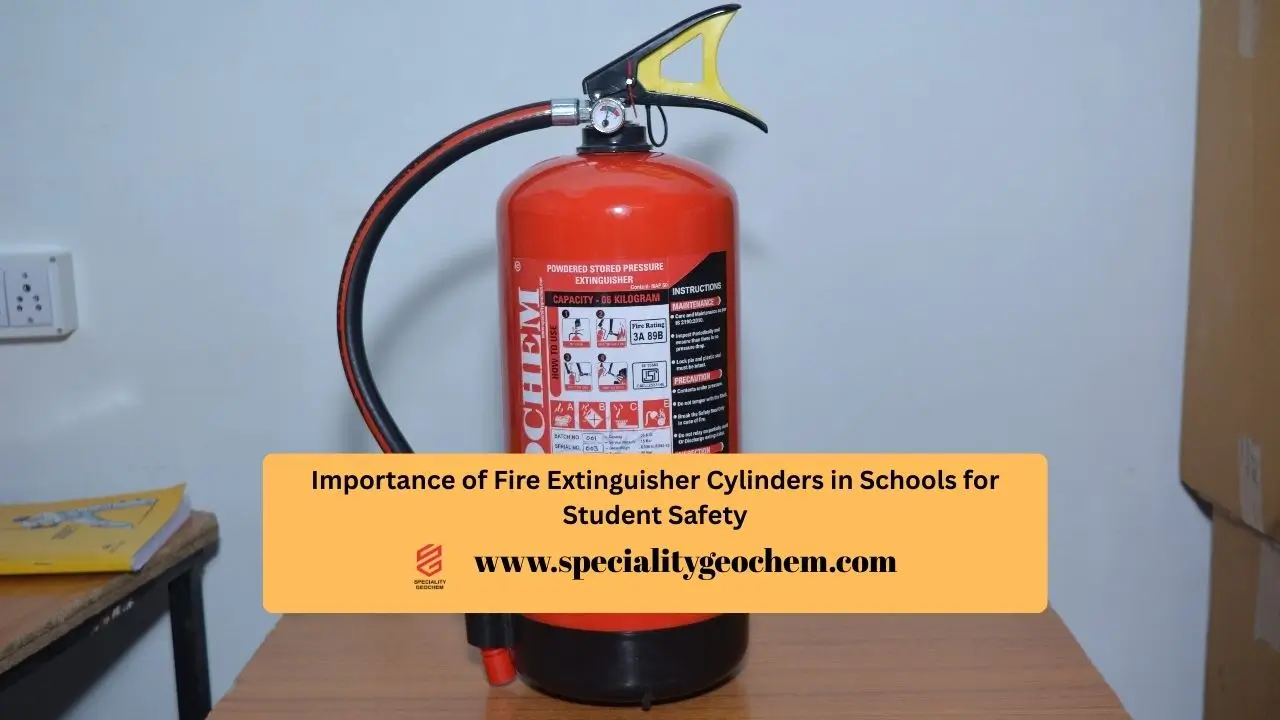Schools are more than just educational institutions—they are environments where children spend a significant part of their daily lives. With hundreds of students, teachers, and staff gathered in one place, safety becomes a top priority. While schools focus heavily on academic performance and extracurricular growth, fire safety is one area that cannot be overlooked. Among the essential fire safety tools, fire extinguisher cylinders in schools play a critical role in preventing tragedies and ensuring student safety.
This blog explores why schools must prioritize fire extinguishers, how they protect students and staff, and the steps institutions should take to create a fire-safe environment.
Understanding the Need for Fire Safety in Schools
Children are among the most vulnerable during emergencies. Their natural instinct may be panic rather than quick thinking, making it essential for schools to be well-prepared. Fire incidents in educational facilities may arise from faulty electrical wiring, laboratory accidents, overheated equipment, kitchen mishaps, or even careless handling of flammable materials.
In such scenarios, having fire extinguisher cylinders in schools can make the difference between a minor incident and a catastrophic loss. These cylinders provide an immediate first line of defense against flames until professional firefighters arrive.
Why Fire Extinguisher Cylinders Are Essential in Schools
1. Rapid Response to Emergencies
When a fire breaks out, every second counts. Fire extinguishers allow trained staff to act instantly before the fire spreads beyond control. Placing cylinders at strategic locations such as laboratories, kitchens, electrical rooms, and corridors ensures quick accessibility.
2. Protection of Children’s Lives
The foremost reason for installing extinguishers is safeguarding students. Children cannot always evacuate quickly in case of a fire. A nearby extinguisher gives staff the ability to suppress flames, creating safe evacuation routes.
3. Compliance with Safety Regulations
Educational boards, government authorities, and fire safety regulations mandate the presence of extinguishers in schools. Regular inspection, refilling, and training sessions ensure compliance while also building a culture of safety within the institution.
4. Preventing Large-Scale Damage
A small flame can escalate into a disaster in minutes, threatening infrastructure and educational resources. Having fire extinguisher cylinders in schools ensures early suppression, minimizing property damage and financial loss.
Placement of Fire Extinguishers in Schools
Simply installing extinguishers is not enough; placement plays a major role in effectiveness. Schools should follow guidelines and conduct risk assessments to determine the most vulnerable areas.
Laboratories: Science labs often contain chemicals, alcohol burners, and electrical equipment. Class C (electrical) and Class B (flammable liquid) extinguishers should be placed here.
Libraries: Large volumes of paper make libraries highly flammable. Water- or foam-based extinguishers should be accessible.
Kitchens and Canteens: Cooking oils and LPG gas require Class K (wet chemical) extinguishers.
Electrical Rooms: CO₂ extinguishers are ideal for tackling electrical fires.
Classrooms and Corridors: General-purpose extinguishers (ABC type) should be placed within reachable distance in classrooms and hallways.
Proper signage and unobstructed access to cylinders are equally important for successful deployment during emergencies.
Training Students and Staff for Fire Safety
Merely having extinguishers is not sufficient unless teachers, staff, and even senior students are trained in their usage. Schools must organize regular fire safety drills and demonstrations covering:
How to identify different types of fires.
How to choose the right extinguisher for each fire class.
The PASS technique (Pull, Aim, Squeeze, Sweep) for effective operation.
Evacuation routes and assembly points.
This practical training builds confidence, reduces panic, and ensures coordinated responses in real-life situations.
Regular Maintenance and Inspection of Cylinders
Like all safety equipment, fire extinguishers require periodic checks to remain functional. Schools should maintain a schedule that includes:
Monthly Visual Inspections – Checking pressure levels, seals, and placement.
Annual Servicing – Conducted by certified professionals to ensure cylinders are fully charged and operational.
Hydrostatic Testing – Ensuring cylinder strength and performance.
Refilling After Use – Even partial use requires immediate refilling.
Neglecting maintenance defeats the purpose of having extinguishers and creates a false sense of security.
Benefits Beyond Safety
Installing fire extinguisher cylinders in schools offers benefits beyond immediate fire safety:
Peace of Mind for Parents: Knowing the institution prioritizes safety reassures parents about their children’s well-being.
Boosting School Reputation: A school recognized for its strong safety culture attracts more trust from communities.
Emergency Preparedness Culture: Students learn responsibility and awareness, valuable lessons they carry beyond school walls.
Fire Safety as Part of Education
Fire safety should not just be an administrative concern but part of the curriculum. Schools can incorporate basic fire safety education into classes, teaching children about hazards, prevention, and the importance of extinguishers. Interactive demonstrations, posters, and awareness campaigns can make the learning engaging and memorable.
By doing so, schools empower students to become more responsible and safety-conscious individuals, capable of responding calmly in emergency situations.
The Role of Technology in School Fire Safety
Modern extinguishers and detection systems are more advanced than ever. Schools can complement fire extinguisher cylinders with smoke detectors, sprinkler systems, and fire alarms. Some institutions also install smart monitoring systems that alert staff instantly when extinguishers are used or tampered with.
This integration of technology ensures a layered approach to safety, maximizing protection for children and staff.
Conclusion
Student safety is the foundation of a secure and successful educational environment. Fires can occur unexpectedly, but preparedness reduces the risks dramatically. By installing, maintaining, and properly using fire extinguisher cylinders in schools, institutions not only comply with regulations but also protect the most valuable assets—their students.
At Speciality Geochem, we are committed to providing world-class fire safety solutions, including high-quality fire extinguisher cylinders tailored for schools and other educational facilities. Our mission is to deliver safety equipment that meets global standards, ensuring peace of mind for administrators, parents, and communities. With our expertise and dedication, schools can create safer learning spaces where children can grow and thrive without fear.

